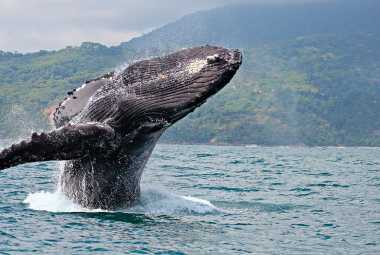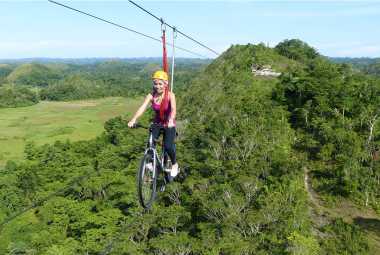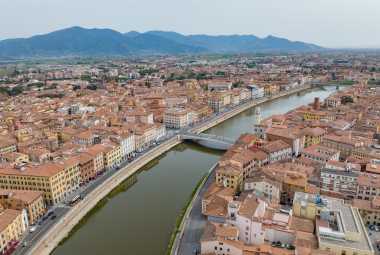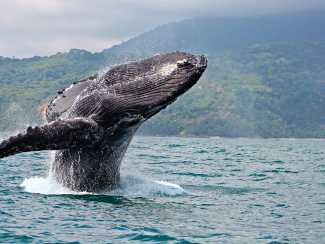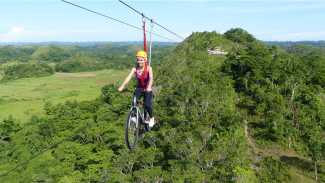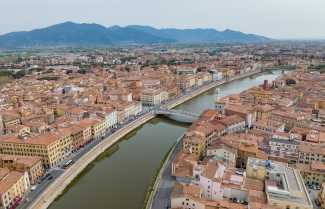Image by XAVIERARNAU/GETTY IMAGES
*Vacation Mode is a for-profit site. It contains paid banner advertisements that are generated and managed by a third-party network. This site also includes relevant affiliate links (both in the content and on the sidebar) all of which we do our best to clearly mark as such.
Explorers torn between two tempting countries, Costa Rica and Argentina, find a difficult choice. Both have stunning nature, fascinating cultures and special experiences.
Costa Rica, spotted with rainforests and beaches, is paradise for nature-lovers. In Central America, its biodiversity is astounding - from Arenal Volcano to San José's culture.
On the other hand, Argentina has a long history and heritage. It's the birthplace of tango, and home to Iguazu Falls and Perito Moreno Glacier. Buenos Aires and Patagonia are both exciting and mysterious.
These two countries differ in their pasts. Costa Rica is known for peace and neutrality. Argentina has faced challenging times like dictatorships and economic crises. Argentineans remain upbeat and unyielding. Costa Rica stands out for its commitment to democracy and protecting the environment.
It's a tough decision between these fascinating locations. Adventure in Argentina or Costa Rica's serenity? Both will offer amazing memories. So don't hesitate, pack your bags and explore either country.
Overview of Costa Rica
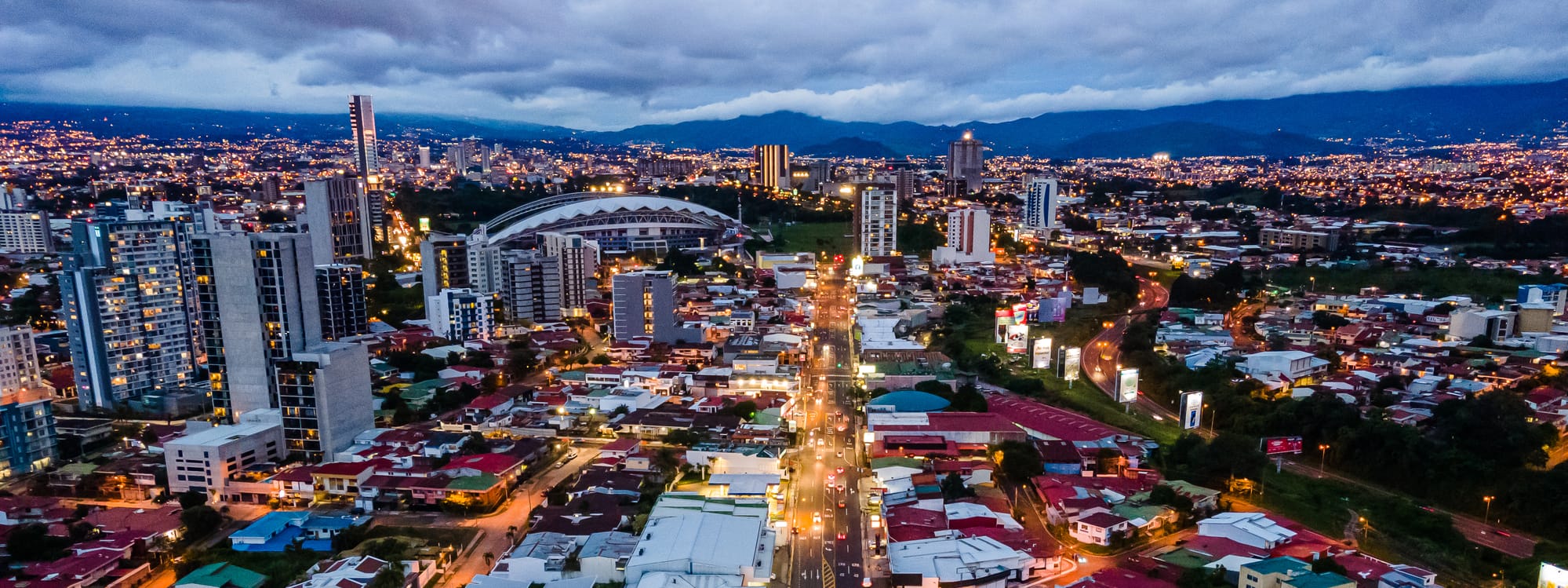
Costa Rica: An In-depth Look at this Vibrant Country
Costa Rica, a tropical paradise in Central America, offers a wide range of attractions and experiences for travelers. With its stunning natural beauty, rich biodiversity, and warm hospitality, Costa Rica has become a popular destination for those seeking adventure and relaxation.
The country is known for its lush rainforests, pristine beaches, and breathtaking landscapes. From the majestic Arenal Volcano to the serene Manuel Antonio National Park, there are numerous opportunities for outdoor exploration and wildlife encounters. Costa Rica is also famous for its ecotourism initiatives, focusing on sustainable practices and conservation efforts.
Beyond its natural wonders, Costa Rica boasts a vibrant culture and history. The capital city of San Jose is home to fascinating museums, art galleries, and colonial architecture. Visitors can immerse themselves in the local culture by exploring traditional markets, indulging in delicious cuisine, and enjoying colorful festivals and celebrations.
When it comes to accommodations, Costa Rica offers a range of options to suit every taste and budget. From luxury resorts to eco-lodges nestled in the rainforest, there are plenty of choices for a comfortable and memorable stay. Moreover, the country's warm and welcoming locals ensure that visitors feel right at home throughout their journey.
For adventure enthusiasts, Costa Rica presents a myriad of exciting activities such as zip-lining, white-water rafting, hiking, and diving in its crystal-clear waters. Travelers can also indulge in rejuvenating spa treatments, yoga retreats, and wellness experiences, making it an ideal destination for relaxation and self-discovery.
Location and Geography
Costa Rica is a country in Central America, known for its diverse geography! From beaches to mountains, this biodiverse nation showcases many natural wonders. Let's explore details of Costa Rica's location and geography.
| Location | Central America |
| Bordering Countries | Nicaragua to the north. Panama to the southeast. |
| Coastline | 811 miles (1,290 kilometers). On both the Caribbean Sea and Pacific Ocean. |
| Highest Point | Cerro Chirripó - 12,530 feet (3,820 meters) |
| Main Features | Rainforests, volcanoes, beaches, coral reefs, and wildlife. |
Costa Rica is one-of-a-kind due to its commitment to environmental conservation. It has dedicated over 25% of its land area to national parks and protected areas. This encourages eco-tourism and preserves its unique biodiversity.
One amazing example of Costa Rica's incredible geography is Arenal Volcano. Until 2010, it was one of the most active volcanoes in the world. It thrilled locals and tourists alike with its sporadic eruptions. Amazing lava flows lit up the night sky against a lush rainforest background - a truly breathtaking sight!
Climate and Weather
Costa Rica boasts an enchanting array of climates. Its geography creates a variety of microclimates.
- Tropical Rainforest Climate: The Caribbean coast is a land of lush rainforests and abundant precipitation.
- Cloud Forest Climate: Climb to the higher altitudes to find cool, misty air in places like Monteverde. Expect different ecosystems.
- Seasonal Variation: In the Central Valley, look forward to two distinct seasons with varied terrain.
- Pacific Coast Climate: Enjoy warm coastal weather throughout the year, with rain during wet season.
- Microclimates: Costa Rica's small size brings localized weather changes, with one area sunny and another rainy.
- Biodiversity Influence: Enjoy the climatic diversity with its range of flora and fauna - a paradise for nature lovers.
In the Osa Peninsula, rainfall is higher than anywhere else in Costa Rica. This region is renowned for its biodiversity and ecotourism. Plus, Tortuguero National Park offers a special treat - the nesting ground for green sea turtles from July to October!
Ready to make the most of Costa Rica's climate and weather? Here's how:
- Explore Different Regions: Discover the contrasting climates and explore the natural wonders.
- Be Prepared: Pack clothing for both humid rainforests and beaches for a comfortable journey.
- Plan Activities Wisely: Make the most of dry season for activities like hiking or zip-lining. Embrace rainy days by visiting hot springs or museums.
By following these tips, you'll have a unique and unforgettable experience in Costa Rica's stunning landscapes.
Cultural Identity and Diversity
Costa Rica takes pride in its diverse culture. Different cultures, traditions and ethnicities blend together to form its vibrant society.
The Bribri and Boruca people are indigenous communities that have preserved their customs, languages and beliefs throughout history. These traditions are celebrated in festivals and events, giving visitors a chance to experience the culture.
Spanish colonialism also left its mark on Costa Rica. Bullfighting and architecture styles from colonial times still exist in some areas. The combination of native and colonial influences creates an exclusive cultural fabric.
Visitors can take part in various activities to understand Costa Rican culture. Interacting with local artisans can teach pottery-making and basket weaving. Attend traditional dances such as the Punto Guanacasteco or swing criollo to appreciate the vibrancy of folk dances.
To gain a deeper insight into the culture, it is recommended to join rural community tourism projects. This way, travelers can connect with local families and learn about their daily lives and customs. This supports sustainable tourism that benefits rural areas while giving a unique understanding of the country's identity.
Overall, getting to know Costa Rican culture provides an amazing opportunity to grasp its essence. Exploring indigenous territories, connecting with artisans and joining community tourism projects, each experience gives a rewarding perspective on the country's culture.
Overview of Argentina

Argentina, a South American country with a rich cultural heritage, offers a diverse and vibrant experience for travelers. From its bustling capital city of Buenos Aires to its picturesque landscapes of Patagonia and the Andes Mountains, Argentina is a destination that captivates with its natural beauty and historic sites. Known for its tango music and dance, Argentina also boasts a renowned culinary scene, with delicious dishes such as empanadas and asado (barbecue). Additionally, the country is home to the awe-inspiring Iguazu Falls, one of the world's largest waterfalls. With its vibrant culture, stunning landscapes, and delicious cuisine, Argentina is a must-visit destination for any traveler seeking a unique and unforgettable experience.
Pro Tip: Don't miss the opportunity to explore Argentina's wine regions, particularly Mendoza, where you can indulge in world-class Malbec wines and enjoy breathtaking vineyard scenery.
From lush rainforests to rugged mountains, Costa Rica and Argentina offer stunning landscapes that are almost as breathtaking as the cost of a flight to get there.
Location and Geography
Argentina, located in the south of South America, is immense! Spanning an area of 2.8 million square kilometers, it's bordered by Chile, Bolivia, Paraguay, Brazil, and Uruguay.
- Patagonia in the south is full of glaciers, mountains like the Andes, and peaceful lakes.
- The Pampas region in the middle has flat plains that are great for agriculture and farming.
- The Chaco in the northeast is made up of dense forests and marshlands.
- Cuyo to the west has deserts and vineyards.
- Mesopotamia in the east has rainforests and amazing waterfalls like Iguazu.
With so much land, Argentina has many climates. From subtropical in the north to subpolar in Patagonia. This variety of landscapes and climates makes Argentina special.
Argentina's history goes way back. In 1516, Spanish explorers led by Juan Díaz de Solís arrived. After years of revolution, Argentina declared independence from Spain on July 9th, 1816. This event changed Argentina forever and began its growth as a nation.
Climate and Weather
Argentina is huge, and its geography gives it a variety of climates and weather. Its landscapes range from icy Andes peaks to humid subtropical forests.
In the north, provinces like Jujuy and Salta have a humid subtropical climate. Summers are hot and wet, winters mild. Central Argentina, including Buenos Aires and Cordoba, has temperate weather with hot, humid summers and cool, frosty winters.
Patagonia to the south is dry and windy, with cooler temperatures all year round. Tierra del Fuego in the south gets subpolar weather, with long, cold winters and short, cool summers.
Rainfall varies by region. The northwest gets more rain due to being close to the Andes. Patagonia is drier.
Argentina has plenty of outdoor activities on offer. Hike in Misiones' lush rainforests or go wine tasting in Mendoza.
Pro Tip: Pack layers when you travel, as temperatures can vary significantly.
Cultural Identity and Diversity
In Argentina, cultural identity and diversity are abundant. It displays a captivating mix of influences that have fashioned its one-of-a-kind heritage. Spanish roots are the basic building block of the Argentinean culture. Indigenous heritages, as well, have contributed much to the cultural framework. European immigrants during the 19th and 20th centuries also added to the mix.
Tango and music are some of the most popular expressions of the culture. Asado, empanadas, and mate are all traditional delicacies.
Street art is renowned worldwide for its vibrancy and its ability to convey messages. Murals and graffiti pieces are very popular and demonstrate the dynamic atmosphere of the country.
The Dirty War (1976-1983) was a horrible period of military dictatorship. Many citizens were abducted and tortured due to their political beliefs. This experience had a deep effect on Argentina's collective memory and cultivated a strong spirit among its people.
Argentina's cultural identity and diversity are incomparable. It has a rich history of passionate traditions, amazing art forms, and an inspiring tenacity.
Similarities between Costa Rica and Argentina
Both Costa Rica and Argentina share commonalities, highlighting their similarities. Consideration will be given to these aspects through a detailed comparison utilizing a table. The table will provide accurate data, showcasing the similarities between these two nations. An exploration of unique details will follow, offering additional insights. To ensure a comprehensive understanding of these countries, it is important to delve into these aspects. Finally, a compelling call-to-action will emphasize the fear of missing out, urging readers to explore further.
Learning Spanish in Costa Rica or Argentina is like trying to tame a wild jaguar with a pocket dictionary. Good luck, my friend!
Spanish Language
The Spanish Language is a point of comparison between Costa Rica and Argentina.
Here is a table showing their key language details:
| Costa Rica | Argentina |
|---|---|
| Official Lang. | Spanish |
| Accent | Central American |
| Vocabulary | Indigenous & Creole |
| Grammar | Uses Vos |
The Spanish language in each of these countries has its own unique features. In Costa Rica, their language includes elements from local indigenous languages, plus the local creole. In Argentina, the influence of Italian is seen due to the many Italian immigrants.
To illustrate this linguistic diversity, I will share a story. In Monteverde, Costa Rica, I met a guide who spoke "Monteverdeño", a dialect blending their language with unique words and expressions. Then, during my trip to Buenos Aires, Argentina, I spoke with a taxi driver whose speech had an undeniable Italian influence. It was interesting to see how culture and history shape the language of each country.
Passion for Soccer
Football, the beautiful game, connects Costa Rica and Argentina. Both countries follow the sport with utmost passion. It's not just a pastime; it's part of their culture and identity. The support for their teams during local and international tournaments is incomparable.
Costa Rica has a special place in its people's hearts for soccer. It's played everywhere - from neighborhood streets to pro leagues. The success of their national team has only increased the enthusiasm of their fans. The Estadio Nacional, full of red and blue supporters, is a symbol of unwavering devotion.
Argentina has a long history with soccer, producing legendary players like Diego Maradona and Lionel Messi. Every match carries so much emotion and anticipation. From the famous La Bombonera stadium in Buenos Aires to local pitches, the cheers can be heard all over the country.
In Costa Rica, football brings people from all walks of life together. In Argentina, the fans show unyielding loyalty to their team. This dedication leads to heated discussions about players and coaches.
The unique cultures of Costa Rican and Argentinean soccer invite us to experience them firsthand. The colors in the stadiums and the cheers make an electric atmosphere. No matter if you're in Costa Rica or Argentina, you don't want to miss the chance to be part of something special.
Rich Natural Beauty
The captivating beauty of Costa Rica and Argentina is undeniable. Both nations boast amazing landscapes and varied ecosystems that leave visitors in admiration. From verdant rainforests to soaring mountains, these two countries make a nature lover's perfect paradise.
- 1. Mesmerizing Rainforests: Costa Rica and Argentina are blessed with some of the world's most breathtaking rainforests. Exploring these forests is an unforgettable experience, thanks to the lush greenery, vibrant flora, and exotic wildlife.
- 2. Golden Beaches: These countries boast miles of coastline, offering magnificent beaches. Whether you prefer to relax on the sands or love adventure water sports, the stunning beaches here have something for everyone.
- 3. Majestic Mountains: The mountains in Costa Rica and Argentina are a vision to behold. With peaks reaching great heights, these mountains offer fantastic panoramic views.
- 4. Enchanting Waterfalls: Amongst dense forests, you'll find cascading waterfalls in both nations. The sound of rushing water and the serene surroundings create a very tranquil atmosphere.
- 5. Captivating Wildlife: Costa Rica and Argentina feature an abundance of exotic wildlife species. From rare birds to elusive mammals, spotting them in their natural habitats is a truly inspiring experience.
- 6. National Parks & Reserves: To protect their natural heritage, both countries have established numerous national parks & reserves. These protected areas not only safeguard biodiversity but also give ample chances for eco-tourism.
Apart from these remarkable similarities, each country has its own unique details. Costa Rica is renowned for its many colorful bird species, while Argentina enthralls visitors with its awe-inspiring glaciers. To make the most of the rich natural beauty in Costa Rica and Argentina, here are a few tips:
- Go on guided hikes: Exploring the forests and mountains with a knowledgeable guide helps you gain a better understanding of the plants, animals, and ecosystems that are unique to the region.
- Enjoy snorkeling or diving: The coastal areas of the two countries offer amazing chances for underwater exploration. Uncover vibrant coral reefs filled with marine life when you snorkel or dive in these crystal-clear waters.
- Participate in wildlife tours: Joining specially-designed tours for wildlife observation gives you the chance to witness the incredible diversity of animal species in these countries.
- Support sustainable tourism: By choosing eco-friendly accommodations and patronizing local businesses, travelers can help conservation efforts while delighting in the natural beauty of Costa Rica and Argentina.
- Take part in cultural experiences: Nature is certainly the highlight, but don't forget to immerse yourself in the rich cultural heritage of the two countries. Visit local communities, sample traditional cuisine, and join cultural festivals to truly appreciate their unique identities.
By following these tips, visitors can gain an even greater appreciation of the rich natural beauty that Costa Rica and Argentina have to offer. From exploring rainforests to admiring glaciers, these remarkable destinations offer endless awe-inspiring experiences.
Differences between Costa Rica and Argentina
Costa Rica and Argentina have several notable differences. Firstly, their geographies greatly vary. Costa Rica is a small Central American country known for its stunning beaches and lush rainforests. On the other hand, Argentina is a vast South American nation with diverse landscapes that range from the Andes Mountains to the expansive Pampas grasslands.
Secondly, there is a notable disparity in terms of culture and language. While Costa Rica is primarily influenced by Spanish culture and the official language is Spanish, Argentina has a more diverse cultural heritage due to a mix of indigenous, European, and other immigrant influences, with Spanish being the predominant language.
Additionally, the two countries have distinct culinary traditions. Costa Rican cuisine is known for its emphasis on fresh ingredients, particularly seafood, tropical fruits, and rice and beans. In Argentina, the cuisine is heavily influenced by European flavors, with a strong emphasis on beef and wine.
Finally, while both countries have a rich soccer culture, Argentina is renowned for its passionate fervor for the sport, having produced legendary players such as Diego Maradona and Lionel Messi.
Pro Tip: When planning a trip to either country, familiarize yourself with the local customs and regulations to fully enjoy your experience.
Size doesn't matter, but when it comes to Costa Rica and Argentina, their landscapes are like a game of 'who's got the biggest': Costa Rica with its petite yet powerful rainforests, or Argentina with its vast, seemingly endless pampas.
Size and Population
Costa Rica and Argentina vary a lot when it comes to size and population. Let's take a closer look.
See below for the differences:
| Costa Rica | Argentina | |
|---|---|---|
| Size (sq km) | 51,100 | 2,780,400 |
| Population (millions) | 5 | 45 |
One eye-catching element is that, though small in size, Costa Rica has a high population density compared to Argentina. This can be because of urbanization and access to resources.
You might be asking why it matters? Knowing these variations lets us appreciate their uniqueness and the unique experiences they offer. So don't forget to explore them!
Economic Development
Costa Rica and Argentina have one-of-a-kind economies that stand out. Let's look at the key differences that influence their growth.
- Costa Rica: Stable and prosperous, Costa Rica is fueled by industries such as tourism, electronics production, and agriculture. It's a favorable place to invest, with plenty of incentives.
- Argentina: Endowed with natural resources, Argentina is sustained by agriculture, mining, and manufacturing. It has lots of potential with its vast land and talented workforce, though it does see its share of economic struggles.
- Their Human Development Indexes (HDI) differ, thanks to Costa Rica's emphasis on education and social programs. Argentina is dedicated to raising living standards.
- When it comes to international trade, Argentina exports mostly agricultural products like soybeans and beef. On the other hand, Costa Rica has diversified its exports to include medical devices, computer chips, and tropical fruits.
However, each country has its own issues. Costa Rica must keep investing in sustainability and tackling income inequality. Argentina must focus on creating a steady business climate despite the political uncertainty.
Pro Tip: If you're interested in these countries' economic development, do your research to find potential investments or business partnerships.
Culinary Traditions
Costa Rica and Argentina possess different culinary customs, flaunting their original cultures and tastes. The food of both countries shows a mix of influences and local elements, creating a remarkable gastronomic experience for residents and tourists.
In Costa Rica, traditional dishes are generally uncomplicated yet flavorful. Rice and beans, usually referred to as "gallo pinto," is a mainstay in Costa Rican cuisine. This hearty mix is usually served with meat, plantains, and fresh veggies. Another famous dish is "casado," which consists of rice, beans, salad, plantains, and a selection of meat or seafood. Seafood is abundant in coastal areas and is regularly used in dishes like ceviche or grilled fish.
On the other hand, Argentina is renowned for its exceptional beef. Cooked meats, especially beef steaks known as "asados," are an essential part of Argentine cooking. These luscious cuts of meat are cooked on open fire grills called "parrillas," giving them smoky flavors. Empanadas, savory pastries filled with ingredients such as beef, cheese, or veggies, are another popular dish in Argentina. Additionally, the nation is proud of its world-renowned wine production, particularly Malbec wines.
Despite both countries embracing their traditional meals, there are unique details that further set them apart. In Costa Rica, tropical fruits like mangoes, pineapples, and papayas play an important role in desserts and beverages like fruit smoothies or batidos. In contrast, Argentina's love for dulce de leche can't be overlooked - this caramel-like spread complements desserts such as alfajores (traditional cookies) or panqueques (thin pancakes) nicely.
Pro Tip: When traveling to Costa Rica or Argentina, explore street food markets to completely immerse yourself in their culinary customs. Not only will these markets offer delicious local treats, but they'll also provide glimpses into the energetic culture and lively atmosphere of these countries.
Conclusion
In the battle between Costa Rica and Argentina, it's difficult to decide who wins. But, looking at different factors, we can find many interesting conclusions.
Costa Rica has beautiful beaches and lush rainforests. On the other hand, Argentina has tall mountains and flat plains. Every country gives travelers a different experience.
When it comes to animals, Costa Rica stands out with its many tropical creatures like sloths and monkeys. Argentina has penguins in Patagonia and whales near the coast for wildlife lovers.
For those who seek thrills, both countries offer zip-lining and whitewater rafting. But, Costa Rica is world-famous for surfing and lures surfers from all around.
When it comes to food, Argentina is well-known for its steaks and wines. Costa Rica may not have the same food fame, but it has tasty seafood dishes.
Here are a few tips to make the most of your trip:
- In Costa Rica, visit Manuel Antonio National Park or Monteverde's cloud forests.
- In Argentina, witness a tango show in Buenos Aires or visit Iguazu Falls.
No matter which country you pick, it will leave special memories in your heart. So pack your bags and go on an adventure that fits you - a wild exploration or a cultural journey - both countries guarantee an unforgettable experience.
Frequently Asked Questions
FAQs about Costa Rica and Argentina
1. Which country is more affordable, Costa Rica or Argentina?
Costa Rica is generally considered more expensive than Argentina. While both countries offer various budget options, in terms of overall cost of living, Argentina tends to be more affordable.
2. Which country has a better climate, Costa Rica or Argentina?
Both countries have diverse climates, so it depends on personal preferences. Costa Rica is known for its tropical climate, while Argentina experiences a range of climates, from subtropical to subpolar.
3. Are there any safety concerns in Costa Rica or Argentina?
Both Costa Rica and Argentina are relatively safe countries for travelers. However, it's always recommended to take necessary precautions and be aware of your surroundings, especially in crowded areas or tourist hotspots.
4. Which country offers more outdoor adventure opportunities, Costa Rica or Argentina?
Costa Rica is famous for its adventure tourism, offering activities like zip-lining, surfing, and hiking in its lush rainforests. Argentina, on the other hand, offers diverse landscapes for outdoor activities such as mountaineering, skiing, and glacier trekking.
5. Can I visit both Costa Rica and Argentina in the same trip?
Yes, it is possible to visit both countries in the same trip, especially if you have enough time. There are direct flight connections between the two countries, making it convenient to explore the unique offerings of both Costa Rica and Argentina.
6. Which country has better wildlife viewing opportunities, Costa Rica or Argentina?
Costa Rica is renowned for its rich biodiversity and offers excellent opportunities for wildlife viewing, including colorful birds, monkeys, and turtles. Argentina, on the other hand, is known for its diverse wildlife, such as penguins, whales, and various species of birds, particularly in the Patagonia region.
Things to do in Costa Rica
Things to do in Argentina


